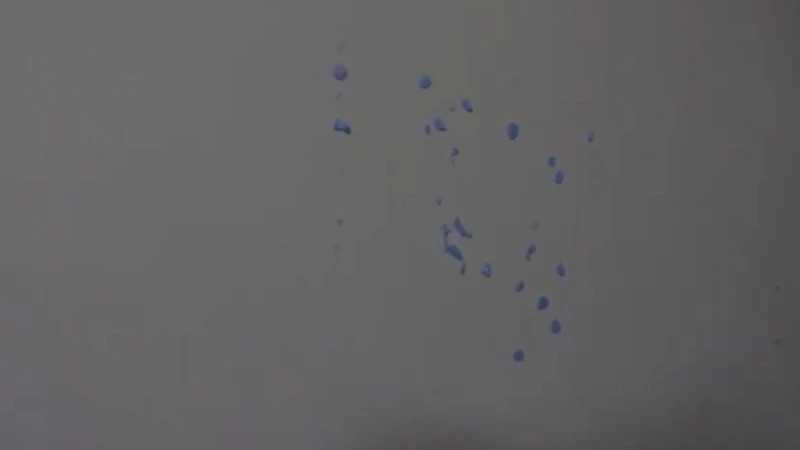Encountering glue tack on your walls can be a frustrating issue, especially when it comes to maintaining the aesthetics and integrity of your home’s interior. The need to remove glue from walls while preserving the underlying surface calls for strategic methods and careful application. Whether it’s from children’s art projects or temporary decorations, this guide will provide you with comprehensive solutions for glue tack removal.
Understanding Adhesive Residue on Walls
Why Does Glue Leave Tacky Residue?
Adhesive products are designed to form a strong bond with surfaces, which is why they can leave behind a stubborn, tacky residue. The chemical composition of glue allows it to adhere firmly, but when removed, polymers in the adhesive can linger, resulting in a sticky aftermath. Understanding this is key to tackling the challenge of cleaning walls.
The Impact of Glue Tack on Different Wall Surfaces
Different wall surfaces react to glue tack in various ways. Glossy painted walls might resist adhesive residue better than matte finishes. Wallpaper, on the other hand, can tear or discolor if not treated gently during wall adhesive cleaning. Being aware of your wall’s surface is crucial before you begin the cleaning process.
Preparation for Cleaning Walls
Gathering the Right Materials
To ensure effective and non-damaging wall cleaning, the right tools are essential. You will need:
- Soft cloths or sponges
- Mild detergent or dish soap
- Warm water
- White vinegar or rubbing alcohol (for tougher residue)
- Plastic scraper or credit card
Safety Precautions for Non-Damaging Wall Cleaning
Protect your walls by testing cleaning solutions on inconspicuous areas first. Use gentle circular motions to avoid paint peeling, and always start with the mildest cleaning agent available. Ensure the room is well-ventilated to avoid inhaling fumes from any stronger solvents you may need to use.
DIY Glue Removal Techniques
Safe Tack Removal Methods
For safe tack removal, begin with a mixture of warm water and mild detergent, applying it with a soft cloth. If the tack persists, escalate to using a solution of equal parts vinegar and water, which can break down the adhesive without harming your walls.
How to Clean Sticky Walls with Household Items
When pondering how to clean sticky walls using items already in your home, consider solutions like baking soda mixed into a paste with water or using mayonnaise to dissolve the glue. Olive oil can also be effective, but use these oil-based methods sparingly to avoid staining.
Step-by-Step Guide to Remove Glue from Walls
Step 1: Testing the Cleaning Solution
Before applying any solution to the affected area, test it on a hidden section of the wall. Wait for the test spot to dry to ensure there are no adverse effects.
Step 2: Gentle Application
Apply your chosen cleaner to a soft cloth and dab it onto the glue tack gently. Patience is key — give the solution time to work its magic.
Step 3: Addressing the Glue Tack
Once the cleaning solution has softened the residue, use a plastic scraper or credit card edge to carefully lift and peel away the glue. Proceed slowly to minimize the risk of damage.
Step 4: Rinsing and Drying the Wall
After the tack is removed, rinse the wall with clean water and a new cloth. Dry the area thoroughly with a towel to prevent water damage or streaks.
Advanced Cleaning Techniques for Stubborn Residue
Using Commercial Wall Adhesive Cleaning Solutions
For more stubborn cases, commercial wall adhesive cleaning products can be effective. Follow the manufacturer’s instructions closely and use these potent solutions as a last resort.
When to Use Professional Cleaning Services
If DIY methods fail to get rid of tacky residue, it may be time to call in professional cleaning services. They possess the expertise and specialized equipment to handle the toughest adhesive remnants without compromising your walls.
Preventive Measures and Maintenance Tips
Choosing Wall-Friendly Adhesives
To prevent future challenges, opt for wall-friendly adhesives known for easy removal. Products like removable mounting tabs or poster putty can offer a secure hold with less risk of leaving behind residue.
Regular Maintenance to Avoid Tacky Build-Up
Maintaining your walls with regular dusting and gentle cleaning can prevent the accumulation of dirt that sticks to any residual adhesive. Staying proactive is the best way to ensure your walls remain in pristine condition.
Conclusion: Maintaining Clean and Tack-Free Walls
By understanding the nature of glue tack and employing the right techniques, you can ensure your walls stay clean and free of residue. Whether through DIY glue removal or professional assistance, the goal is always the preservation of your walls’ integrity and appearance.
When it comes to DIY or crafting, glue can be an essential tool, but accidents happen and sometimes glue ends up where it shouldn’t. If you’re facing the sticky situation of glue tack on your walls, don’t worry. We’ve got you covered with a range of articles that can help you tackle this problem. For specific types of glue, you can read our guides on how to get glue stick off walls, how to get wood glue off walls, and how to get tile glue off walls. Each article is tailored to address the unique challenges presented by different adhesive materials, ensuring you can restore your walls to their former glory.
FAQs on Glue Tack and Adhesive Residue Removal
For any additional questions not covered in this guide, please refer to the FAQs section. From alternative cleaning solutions to tips on tough textures, we strive to provide you with a comprehensive resource for maintaining your home’s beauty and charm.

